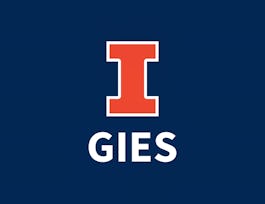This course gives you an easy introduction to interest rates and related contracts. These include the LIBOR, bonds, forward rate agreements, swaps, interest rate futures, caps, floors, and swaptions. We will learn how to apply the basic tools duration and convexity for managing the interest rate risk of a bond portfolio. We will gain practice in estimating the term structure from market data. We will learn the basic facts from stochastic calculus that will enable you to engineer a large variety of stochastic interest rate models. In this context, we will also review the arbitrage pricing theorem that provides the foundation for pricing financial derivatives. We will also cover the industry standard Black and Bachelier formulas for pricing caps, floors, and swaptions.



Interest Rate Models

Instructor: Damir Filipović
Sponsored by Coursera Learning Team
35,247 already enrolled
(188 reviews)
Details to know

Add to your LinkedIn profile
22 assignments
See how employees at top companies are mastering in-demand skills


Earn a career certificate
Add this credential to your LinkedIn profile, resume, or CV
Share it on social media and in your performance review

There are 6 modules in this course
What's included
1 video5 readings
We learn various notions of interest rates and some related contracts. Interest is the rent paid on a loan. A bond is the securitized form of a loan. There exist coupon paying bonds and zero-coupon bonds. The latter are also called discount bonds. Interest rates and bond prices depend on their maturity. The term structure is the function that maps the maturity to the corresponding interest rate or bond price. An important reference rate for many interest rate contracts is the LIBOR (London Interbank Offered Rate). Loans can be borrowed over future time intervals at rates that are agreed upon today. These rates are called forward or futures rates, depending on the type of the agreement. In an interest rate swap, counterparties exchange a stream of fixed-rate payments for a stream of floating-rate payments typically indexed to LIBOR. Duration and convexity are the basic tools for managing the interest rate risk inherent in a bond portfolio. We also review some of the most common market conventions that come along with interest rate market data.
What's included
5 videos2 readings6 assignments
We learn how to estimate the term structure from market data. There are two types of methods. Exact methods produce term structures that exactly match the market data. This comes at the cost of somewhat irregular shapes. Smooth methods penalize irregular shapes and trade off exactness of fit versus regularity of the term structure. We will also see what principal component analysis tells us about the basic shapes of the term structure.
What's included
4 videos5 assignments
Models for the evolution of the term structure of interest rates build on stochastic calculus. We start with a crash course in stochastic calculus, which introduces Brownian motion, stochastic integration, and stochastic processes without going into mathematical details. This provides the necessary tools to engineer a large variety of stochastic interest rate models. We then study some of the most prevalent so-called short rate models and Heath-Jarrow-Morton models. We also review the arbitrage pricing theorem from finance that provides the foundation for pricing financial derivatives. As an application we price options on bonds.
What's included
4 videos1 reading5 assignments
We apply what we learnt to price interest rate derivatives. Specifically, we focus on the standard derivatives: interest rate futures, caps and floors, and swaptions. We derive the industry standard Black and Bachelier formulas for cap, floor, and swaption prices. In a case study we learn how to calibrate a stochastic interest rate model to market data.
What's included
4 videos5 assignments
What's included
1 reading1 assignment
Instructor

Offered by
Why people choose Coursera for their career




Learner reviews
188 reviews
- 5 stars
76.06%
- 4 stars
11.70%
- 3 stars
4.25%
- 2 stars
2.12%
- 1 star
5.85%
Showing 3 of 188
Reviewed on Mar 11, 2017
Solid contents, also required solid graduate level mathematics. The instructor may consider providing more details in some of the derivations. It is a bit difficult to follow during some lectures.
Reviewed on Sep 27, 2024
excellent and far more in depth than the 5 week duration would suggest.
Reviewed on Oct 10, 2019
This course was very interesting and a bit hard for me, specially those topics involving measure theory.
Recommended if you're interested in Business

Columbia University

University of Illinois Urbana-Champaign

Johns Hopkins University

University of Colorado System

Open new doors with Coursera Plus
Unlimited access to 10,000+ world-class courses, hands-on projects, and job-ready certificate programs - all included in your subscription
Advance your career with an online degree
Earn a degree from world-class universities - 100% online
Join over 3,400 global companies that choose Coursera for Business
Upskill your employees to excel in the digital economy


